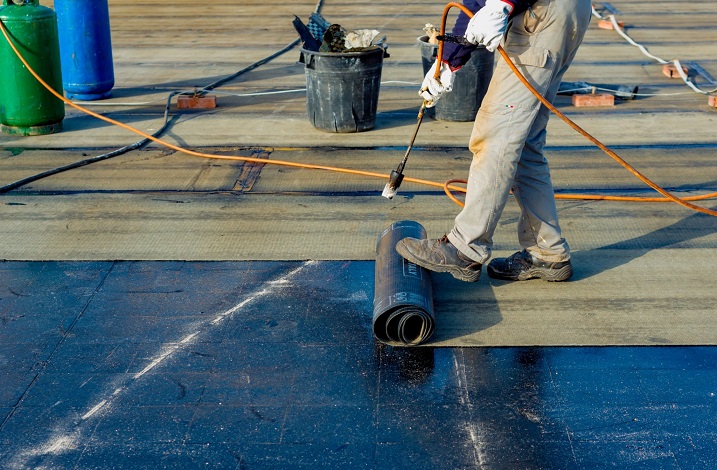
Best Types of Flat Roof Covering
November 18th, 2022
Category: All Blogs, Roofing Solutions
Introduction
Any flat roof system should serve to keep a building protected from the elements, dry, and as energy efficient as possible. Therefore, any flat roof material must aid in protecting a roof from rain, snow, as well as extreme heat. How well a flat roof can prevent leaks and other water damage, which is typically brought on by small pools of water on the rooftop, should be the main concern for homeowners. Read on to know more about the different types of flat roof covering that effectively serve their purpose.
Options available for flat roof coverings
The best options available for flat roof coverings include:
– Rolled asphalt
– BUR (Built-up roof)
– Modified bitumen
– PVC membrane
– TPO (Thermoplastic Polyolefin)
– EPDM (Ethylene Propylene Diene Monomer)
1. Rolled asphalt: The method of covering your roof with rolled asphalt is comparable to installing asphalt shingles. The roof is covered with several layers of tar paper that have been covered in asphalt. The asphalt layer is further protected from UV rays by tiny-crushed stones that are adhered to the top of the surface.
2. BUR (Built-up roof): BUR, also referred to as the tar and gravel roof is a multi-ply solution. In it, a hot blowtorch or other intense heat source is used to apply each tar-soaked ply. Although this technique has proven to be effective at waterproofing, the parts of the roof (i.e., the “bitumen sandwich”) cannot be recycled or used again.
3. Modified Bitumen: Similar to the BUR option, this type of roof material also has additional rubber and elastomers in each layer. The roof becomes stronger and more flexible as a result. This is a tried-and-true approach that has a track record of waterproofing. Due to the several layers, this roof is nevertheless regarded as being “heavy.” The structural qualities of your home or structure must therefore be examined to determine whether a modified bitumen roof is appropriate for it.
4. PVC membrane: PVC membrane was once the most popular single-ply membrane put on flat roofs of residential buildings. Because all of its seams are hot air welded, it is strong and effective. Since the seams have been carefully glued together despite the fact that there are seams, it is exceedingly difficult for any water to permeate the roof. They are made to last for twenty to thirty years.
5. TPO (Thermoplastic Polyolefin): This single-ply membrane is strong and adaptable. It is constructed of recycled materials and the roof can be recycled too. It is expected to last for 20 years.
6. EPDM (Ethylene Propylene Diene Monomer): In the residential housing sector, the EPDM rubber roof is without a doubt the most prevalent form of rubber roof. It is economical, easy to use, and widely accessible. This approach is popular with homeowners because it helps them save money, and it’s popular with roofing contractors because it doesn’t need any specific supplies to be applied. Additionally, its installation is so simple that all that may be required for training is a brief one- or two-hour session.
Conclusion
The choice of flat roof covering is crucial for protecting your home’s flat roof. It can shield your home from snow and rain, help manage the building’s energy efficiency, and give you peace of mind knowing that the most cutting-edge materials and methods were employed in its construction. Therefore, getting acquainted with information on the different options available is necessary so that you can choose what’s best for your abode.
About Us
Dura Roof provides roofing services in various states, such as Assam, Arunachal Pradesh, and Mizoram. They also operate in Siliguri, Jalpaiguri, Kishanganj, and nearby locations. Dura Roof has started to expand its branches towards Bhutan. We deal in various roofing accessories as well as install them. And, in case you are looking for the same, we will look after that thoroughly.
To know more about roofing solutions, visit our page and follow us on Facebook and Instagram
Leave a Comment
